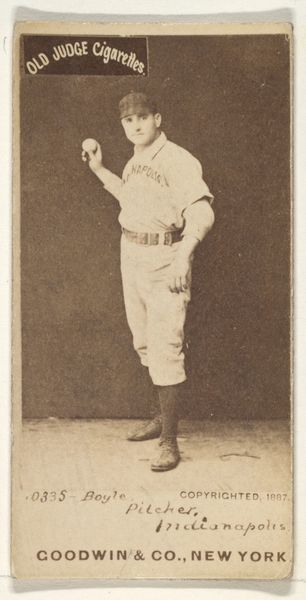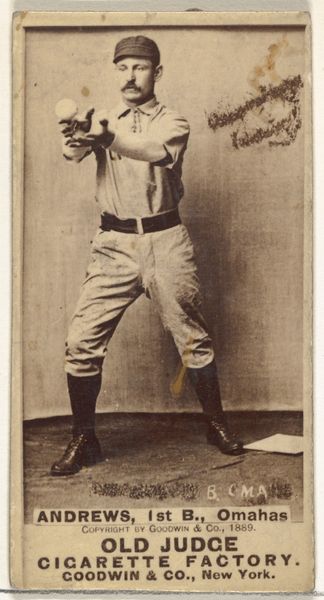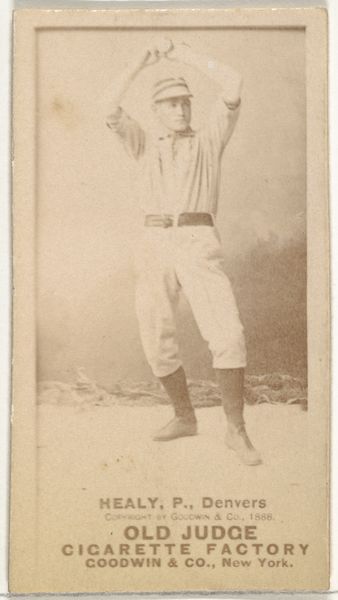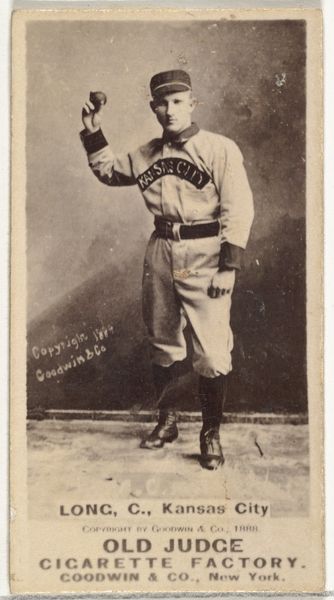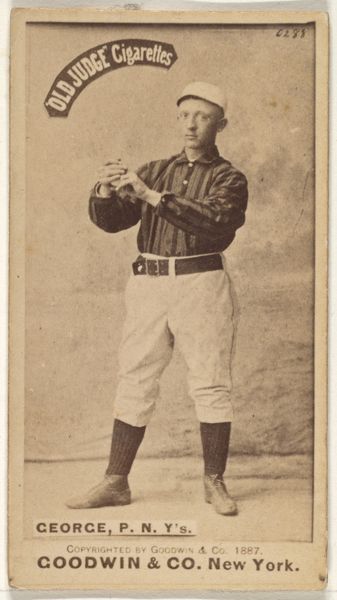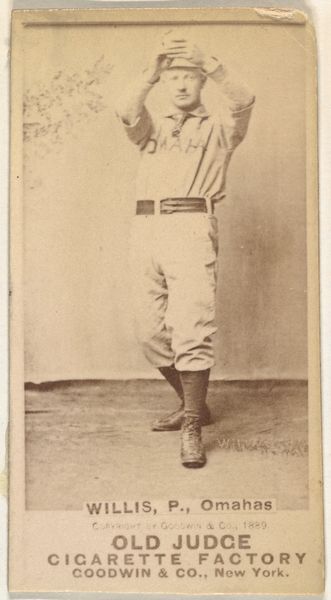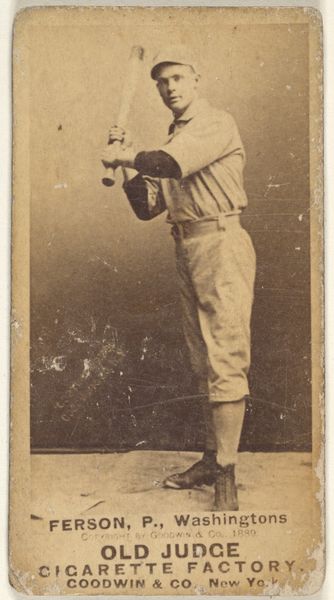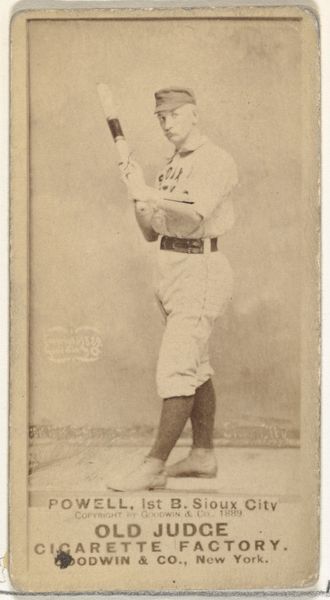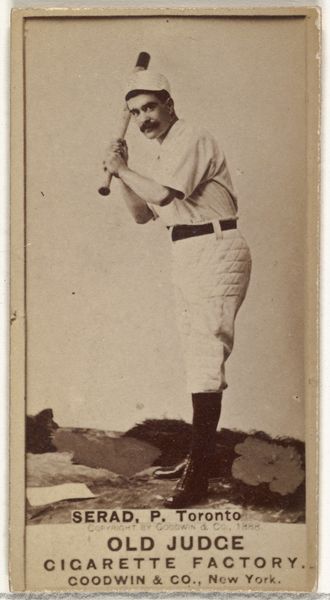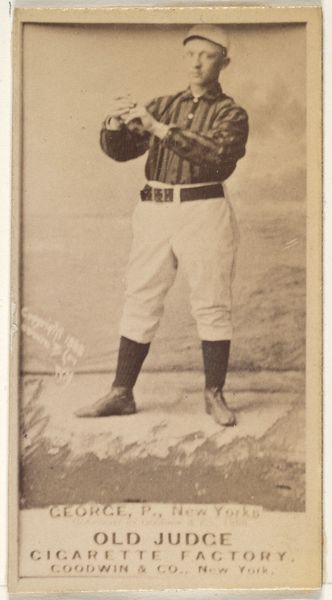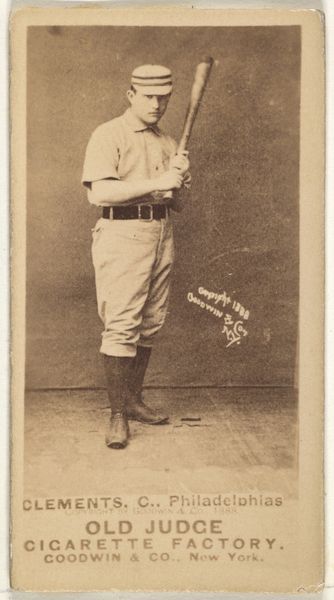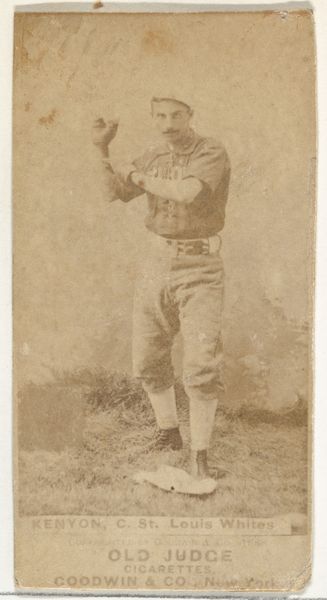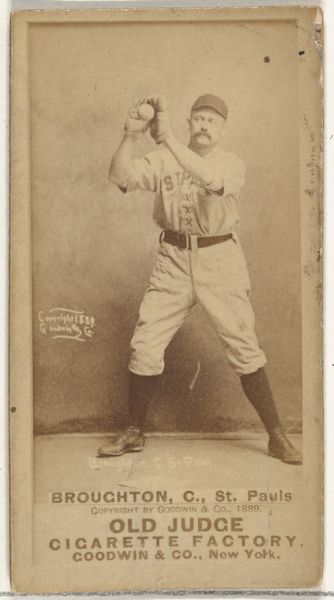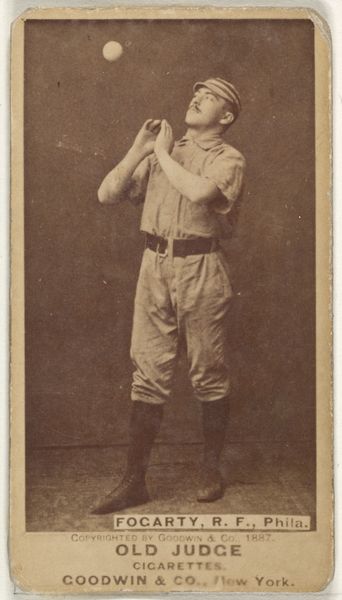
Schoeneck, 1st Base, Chicago, from the Old Judge series (N172) for Old Judge Cigarettes 1887 - 1890
0:00
0:00
drawing, print, photography
#
portrait
#
drawing
# print
#
impressionism
#
baseball
#
photography
#
19th century
#
men
#
genre-painting
Dimensions: sheet: 2 11/16 x 1 3/8 in. (6.9 x 3.5 cm)
Copyright: Public Domain
Curator: This is "Schoeneck, 1st Base, Chicago," from the Old Judge series (N172) for Old Judge Cigarettes, crafted by Goodwin & Company between 1887 and 1890. Editor: There’s something captivating in the sepia tones; they cast a warm, nostalgic shadow. The player is well-built; his pose seems stiff and quite staged. Curator: Exactly. These cards were produced during the burgeoning era of professional baseball, capitalizing on the sport’s rising popularity. Think of them as precursors to today’s sports memorabilia, but carrying the weight of late 19th-century social and cultural ideals. Editor: Speaking strictly about form, the artist used light to define the muscularity and create contrast between figure and backdrop. Note how effectively light reflects on the figure to set him apart from the simple flat ground. The texture and focus give it a strange photographic presence that feels real despite the print format. Curator: Considering the labor conditions and marketing strategies during this period is key. Tobacco companies employed photographs of athletes to appeal to consumers, embedding images of idealized masculinity within everyday consumption. The imagery often perpetuated racial biases and class distinctions of the time. Editor: But observe also how the simplicity creates power. No background distractions, just the man, the ball, the name... These limited elements bring Schoeneck right into the present. There is little between the player and our direct attention. Curator: True. Yet the image is not just a portrait of an individual; it's a symbol of cultural narratives at the time. What stories do we choose to elevate? What structures of power were literally packaged with tobacco products? Engaging with this piece pushes us to confront those tough questions. Editor: Seeing the print lets me step back and appreciate form, texture, contrast and all sorts of features that pull it into art history from just an advertisement. It balances between many genres, a little portrait, genre painting and staged advertising, all while offering much detail to visually investigate. Curator: I agree completely! Examining the historical circumstances, and artistic composition reveals its power within larger sociocultural debates and dialogues that continue to reverberate today.
Comments
No comments
Be the first to comment and join the conversation on the ultimate creative platform.
